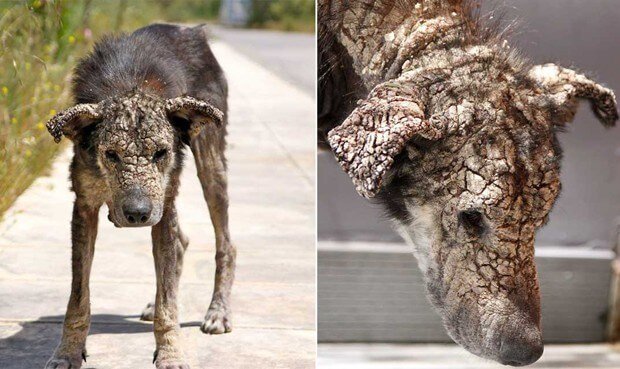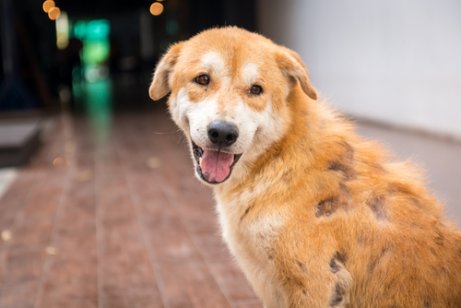Scabies: how to tell if your dog has scabies

Scabies is more than just an annoyance to dogs. The obsessive scratching can damage the skin and cause injuries. In today’s article, you can learn how to know if your dog has scabies and how to treat it.
What is scabies?
Scabies is a disease that affects a dog’s skin and it’s caused by small mites that live under their skin and hair. Once these mites are under the skin, they begin to reproduce.
The mites will lay eggs that eventually hatch, grow and these new mites lay even more eggs. This entire lifecycle will continue until the dog gets proper treatment. It’s really important to get a dog that has scabies treated because these mites are parasites and they feed on the skin and hair of the dog, which causes significant changes to the dog’s appearance.
Most animals have some of these mites. However, when a dog has a strong immune system, they are able to prevent a full-blown infection. Unfortunately, scabies appears when a dog is sick and has a weakened immune system.

There are different types of mites. Each one causes different symptoms and different types of scabies. These are the most common:
Demodicosis
These elongated parasites look like microscopic worms and they enter the body through the hair follicle. When they reproduce, they take up the entire space of the follicles and inflate, which causes the hair to fall out.
Common scabies
Common scabies, or mange, is a disease caused by round parasite that gets inside the skin and begins to borrow small tunnels. These parasites deposit their feces and eggs in these tunnels.
Red scabies
There is another type of parasite which causes red mange, which causes the skin to turn very red.

How to Tell if Your Dog Has Scabies
The most important thing for detecting any disease in your dog is knowing how to observe them. When it comes to a dog having scabies, there are certain behaviors that can alert the disease.
Itching
Scabies causes intense itching that will make your dog scratch compulsively. In general, scabies is more common in areas of the body that have more fat. You may notice that your dog itches a great deal on their stomach, groin, or behind their ears. The itching will be almost so unbearable that the animal will often stop walking to scratch themselves.
Hair loss
You may notice excessive hair loss or bald spots in some areas. Initially, this could be limited to a certain area. However, over time they can spread throughout the body.
Red Spots
This could be a symptom of red mange.
Loss of appetite
Your dog may seem more nervous than normal, moody, or apathetic. If these mood swings are combined with a loss of appetite, your dog could have scabies.
Odor
If the scabies is in a very advanced state, you will notice a rancid or unpleasant odor coming from your dog.
Treatment for scabies
Although scabies can cause serious health issues, it can be cured easily if diagnosed in time. The treatment veterinarians prescribe contain macrocyclic lactones, such as intermectin, moxidectin, or milbemycin. These can be administered orally or topically.
A vet will prescribe antibiotics, as well as gels and shampoos that will help improve the animal’s skin. For the itchiness, they bet may prescribe oclacitinib. Your dog cannot take corticosteroids, because they can weaken the immune system and make the condition even worse.
If your dog has scabies, there is no need to worry too much. Although the effects of scabies can seem devastating at first glance, they can be cured. With treatment, your dog can have their hair and skin in perfect condition again.
This text is provided for informational purposes only and does not replace consultation with a professional. If in doubt, consult your specialist.